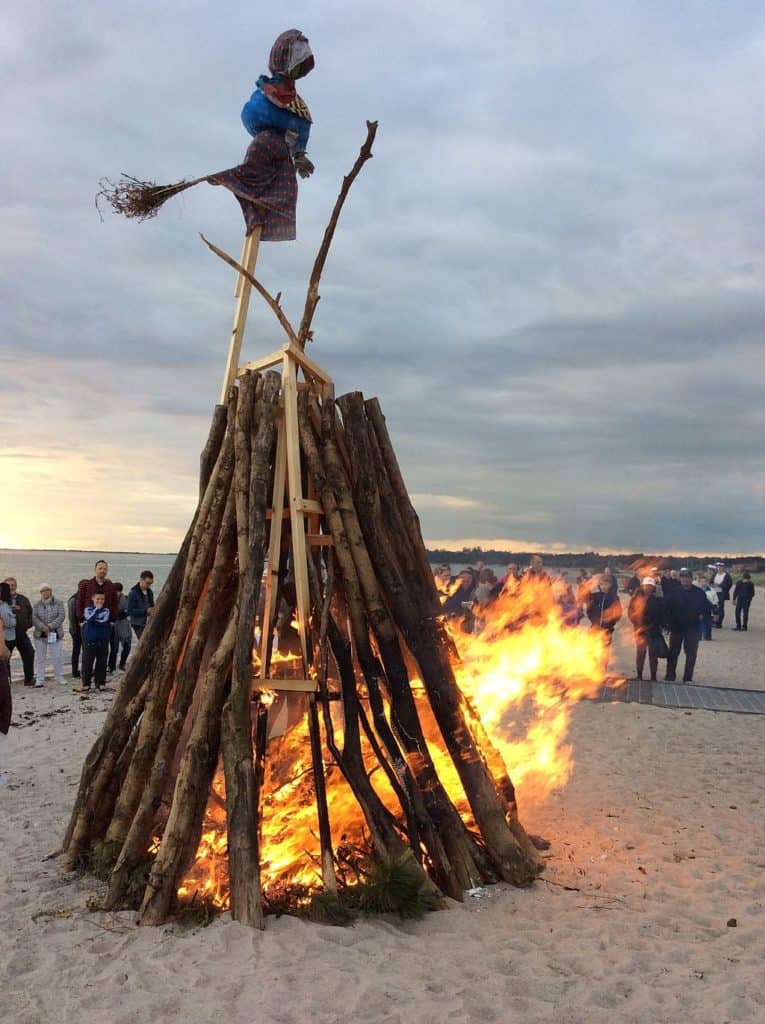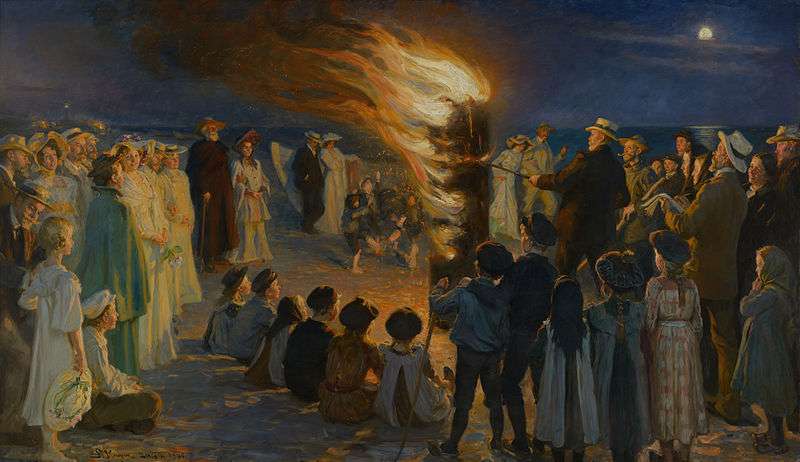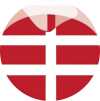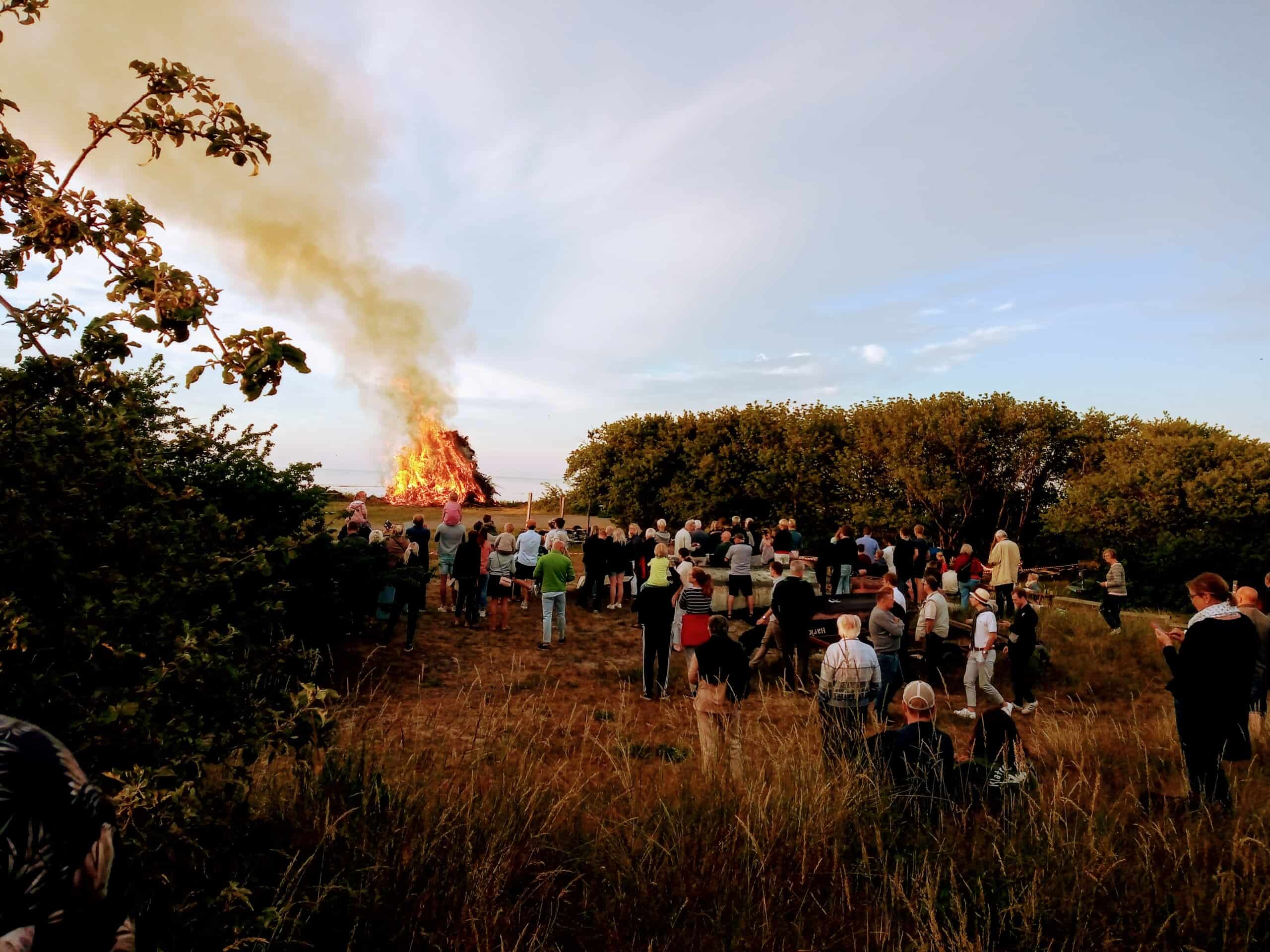Saint Hans Aften, also known as the summer solstice, is celebrated in Denmark every year on the evening of June 23. It is a traditional celebration where bonfires are lit and people sing in chorus.
This night of midsummer, which marks the shortest night of the year, is celebrated with fire festivals in many cultures. However, Denmark is rooted in customs and traditions that date back to darker and more superstitious times in the country’s history.
The name Saint Hans Aften refers to John the Baptist, who according to Christian tradition was born six months before Jesus. In Denmark, Christmas is celebrated on December 24, and John’s birthday is on June 24. The tradition of celebrating the eve of one’s birthday with a campfire goes back to the 17th century.

Although the holiday is nominally associated with Christianity, it has its roots in pagan traditions. According to legend, the summer solstice is a night full of evil forces, when witches travel to the Brocken, the highest peak in the Harz Mountains in northern Germany. To ward off these witches and their evil troll accomplices, the Danes light bonfires to keep the sinister forces at bay.
To give it even more expression, the bonfire is often topped with a witch figurine, which is burned that night symbolic of the summer peak and the coming of longer nights. It is a joyous and festive time when Danes get together, eat, drink and enjoy life.
While the burning of witches has been preserved over the years, the ancient tradition of gathering and consuming magical herbs has largely been replaced by social gatherings with family and friends for dinner and drinks.
It is interesting to note that while the witches burned at Saint Hans Aften are made of paper and hay, in the 16. and 17th century in Denmark actually about 1,000 people, men and women, were burned alive because they were accused of witchcraft. The last person to be executed in this way was Anne Palles, a Danish woman executed in 1693 on the island of Falster for alleged sorcery.
Sankt Hans Aften is traditionally seen as the high point of summer and associated with beautiful late sunsets. However, in Denmark’s climate, it can often turn into a rainy event, but that doesn’t stop people from enjoying their celebrations. Umbrellas and waterproof clothing are often part of the equipment of the festival participants who dance around the bonfire and experience the magic of this night.
The famous picture of Peder Severin Krøyer“Sankt Hansblus på Skagen strand“.
The painting in question is called “Sankt Hansblus på Skagen strand” (translated: “St. John’s fire on Skagen beach”) and was created by the Danish painter Peder Severin Krøyer. It is an iconic work of the Skagen painters, an artists’ colony that established itself in the late 19th century in Skagen, a small coastal town in northern Denmark.

The painting depicts an evening scene on the beach of Skagen during the St. John’s Day bonfire celebration, which takes place on the eve of St. John’s Day on June 23. In the background of the picture stretches the vast sandy beach, bordered by rolling hills and a picturesque dune landscape. The sky is various shades of blue and gray, indicating the approaching end of the day.
In the foreground of the painting there are several people gathered around the burning St. John’s fire. The fire itself creates a bright, warm glow that illuminates the scene and captivates the viewer. People are wrapped in warm clothes to protect themselves against the cool sea breeze. Their faces are rendered by Krøyer in fine detail, expressing their individual characters.
There are different interpretations of the people depicted in the painting. Some of them are actually known members of the Skagen painters’ colony. Among them may be Krøyer’s wife, Marie Krøyer, who was also a talented artist. She stands near the St. John’s fire and seems fascinated by the flames. Other artists and their family members could also be part of the scene, but it is not always possible to identify them clearly.
Krøyer’s painting impressively captures the atmosphere and spirit of the St. John’s Day celebration on Skagen Beach. It provides a sense of community and joy as people come together to celebrate the festival. Krøyer masterfully uses the play of light and shadow to create a warm and inviting mood that draws the viewer into the painting.
“Sankt Hansblus på Skagen strand” is not only a remarkable work of art, but also a historical document representing the Skagen painters’ colony and their artistic devotion to depicting Nordic life and nature. It is a symbol of the importance of community and tradition in a small coastal town, and reminds us how art can capture and preserve the human experience.
Here you can celebrate Saint Hans Aften in Copenhagen 2023
Saint Hans Aften in South Denmark 2023
In Marielyst there is traditionally a Saint Hans bonfire in the square and on the beach. The fire on the beach will be lit at 21:30. The event lasts on the square from 20:00 to 24:00 and on the beach from 20:30 to 21:45. The venue is Marielyst Square and Beach, Marielyst Strandvej, 4873 Væggerløse 1.
In Gedser, the Gedser Landowners Association organizes a Saint Hans bonfire on the beach next to the fishing harbor. The event lasts from 19:00 to 23:00. The venue is Gedser Fiskerihavn, Havnegade, Gedser 2.
Saint Hans Aften in Copenhagen 2023
I have gathered information about various places in Copenhagen that celebrate Sankt Hans Aften with big fires in 2023:
- Islands Brygge: Family-friendly entertainment with speeches, live music, children’s theater and a big Saint Hans bonfire. Music by the Yemi Valdes Latin Band, Telescope For The Blind and Tuhaf.
- Ofelia Plads: talks and music under the theme ‘Tribute to the Witch’. Conversations will be moderated by astrologer, podcast host and magician Annasophia Petri and singer Oh Land will perform.
- Blågårdsplads: play table tennis, participate in a dance competition and enjoy Jamaican barbecue. Bonfire will be lit at 8 p.m., followed by a performance by Danish singer-songwriter, composer and guitarist Bo Evers.
- Frederiksberg Garden: Danish pop-rock band Love Shop will perform a concert and astronomer Anja Cetti Andersen will give the Bonfire speech.
- Tivoli: A speech by Mayor Jacob Bundsgaard and musical entertainment by the Hardinger Band.
- LGBT Midsummer Party at Amager Beach: speeches, performances and cake for the first 50 people. Music from Følsom Front and drag queen Mizz Privileze will open the fun.
- Bakken: entertainment, rousing speeches and a bonfire followed by a laser show. Bakken is the oldest amusement park in the world.
- Reef: Visit this street food paradise and enjoy the view of the harbor where the Bonfire will be lit at 8:45pm. Music by DJs Rasmus Shack & Boogie Rookie (Hi Leif).
- Grønningen: A family-friendly celebration with a treasure hunt for children, followed by a concert with Nanna & Peder and a speech by Peter Hybschmann from Tietgen College.
- Seaside Tolboden: Enjoy delicious seafood and an extensive selection of local and imported wines. DJs will take care of the music and from 21:00 you can enjoy the sounds of a crackling bonfire lit on the quay.
Saint Hans Aften in North Jutland
Here are the events related to Sankt Hans Aften in North Jutland that I found:
Saint Hans Aften in Blokhus
- Date: June 23, 2023
- Place: Blokhus Strand
- Program:
- 18.00 Musical march from Blokhus Torv to the beach
- 19.00 Mini-concert: Nordsø Festival
- 19.00 Concert with Petrols
- 19.50: Welcome by Berit Bøjstrup, Erhvervsforeningen Destination Blokhus
- 20.50 Båltale: Mogens Chr. Gade, Mayor of Jammerbugt Municipality
- 21.00: The fire is lit
- 9:15 p.m.: The celebration continues.
Saint Hans Aften in Skagen
- Date: June 23, 2023
- Place: Sønderstrand, Skagen
- Program:
- 20.40 Music and program distribution
- 21.00: Welcome by Lene Kappelborg, Director of Toppen af Danmark
- Community song: Erindringen
- Båltale: Mads Nipper, Director of Ørsted
- Musical contribution by Jens-Christian Wandt
- Community song: Der er et yndigt land
- The fire is lit (approx. 21.30 h)
- Community song: Midsommersangen “Vi elsker vort land
- Sale of beer, water and sausages by the sport diving club SKAWDYK
- Kul for Vippefyret sponsored by LMH
- Organized by Toppen af Danmark in cooperation with Frederikshavn Municipality and supported by Sparekasse Danmark.
Saint Hans Aften in and around Hirtshals
- Several places in Hirtshals and the surrounding area hold celebrations, including:
- Tornby beach – children’s treasure hunt on the beach at 20.00, entertainment with Odder from Lodder with Tordenskjold and the brave birds from 20.00 to 21.00, fire at 21.00, Båltale from Hanne Trolle and singing together.
- Fun Park – fire at 19.30, Båltale and singing together.
- Leret at B&B by the Sea – fire at 19.00, Båltale from Mayor Søren Smalbro and Midsommervisen sung by the local “Biver”.
- KFUM Spejderne på Halvejen – Fire at 20.00.
- Det grønne Hjørne in Horne – fire at 19.30.
- Tversted Strand – Fire at 20.00.
Important: This year there is a burning ban due to a drought in Denmark, which could potentially affect the Saint Hans Aften celebrations. However, it is important to note that celebrations often include more than just the fires. Many events also include live music, food, games and other activities. So it is possible that the celebrations take place despite the ban on burning, but without the traditional fires.

